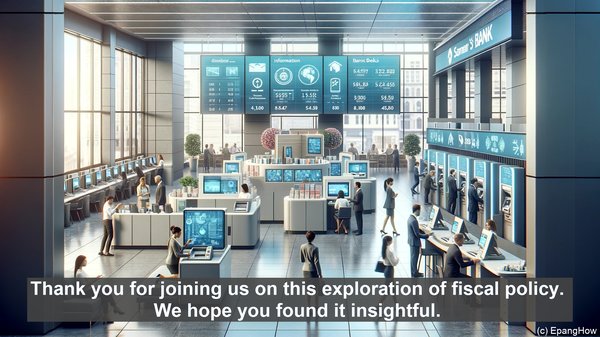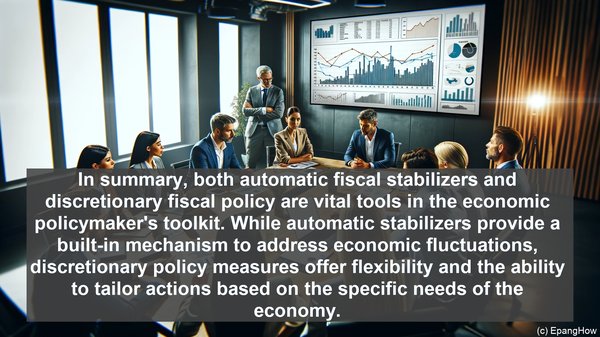Introduction: Navigating Economic Fluctuations
Hello, everyone! In the realm of economics, the stability of a nation’s economy is of paramount importance. However, economic fluctuations are an inherent part of any system. From booms to recessions, the economy is subject to various ups and downs. To mitigate the adverse effects of these fluctuations, policymakers employ various strategies, including fiscal policy. Today, we’ll be focusing on two key approaches: automatic fiscal stabilizers and discretionary fiscal policy.
Automatic Fiscal Stabilizers: The Built-In Mechanism
Automatic fiscal stabilizers, as the name suggests, are pre-existing mechanisms within the fiscal framework that automatically respond to changes in the economy. These stabilizers are typically in the form of tax and transfer systems. Let’s take a closer look at how they function. During an economic downturn, such as a recession, the government’s revenue from taxes naturally declines. At the same time, there is an increased demand for social welfare programs, such as unemployment benefits. Automatic fiscal stabilizers kick in during such times, without the need for any explicit action from policymakers. The tax system, for instance, may have progressive elements, where the tax rates are higher for higher-income individuals. This means that during a recession, when incomes are generally lower, the overall tax burden reduces, providing some relief to individuals and businesses. Similarly, transfer programs, such as unemployment benefits, automatically expand to accommodate the increased demand. These stabilizers, by their very nature, provide a counter-cyclical effect, helping to stabilize the economy without any delay.
Discretionary Fiscal Policy: Active Decision-Making
While automatic fiscal stabilizers operate on their own, discretionary fiscal policy involves active decision-making by policymakers. In this approach, the government takes deliberate actions, such as changing tax rates or implementing new spending programs, to address economic fluctuations. Unlike automatic stabilizers, discretionary policy measures require legislative approval and can take time to be implemented. One of the key advantages of discretionary fiscal policy is its flexibility. Policymakers have the ability to tailor the measures based on the specific needs of the economy. For instance, during a recession, the government may choose to implement tax cuts to stimulate consumer spending or increase infrastructure spending to create jobs. These targeted actions can have a more immediate impact on the economy. However, the effectiveness of discretionary policy measures depends on several factors, including the timing of implementation and the magnitude of the actions. Getting these variables right is crucial for the success of such measures.

The Interplay: Automatic Stabilizers and Discretionary Policy
In practice, automatic fiscal stabilizers and discretionary policy measures often work in tandem. During an economic downturn, automatic stabilizers provide the initial cushion, helping to stabilize the economy. However, in certain situations, such as a severe recession, the impact of automatic stabilizers alone may not be sufficient. This is where discretionary policy measures come into play. By implementing targeted actions, policymakers can provide an additional boost to the economy, complementing the automatic stabilizers. It’s important to note that while discretionary policy measures can be effective in the short term, they also have long-term implications. For instance, increased government spending during a recession may lead to higher levels of public debt. Balancing the short-term needs with the long-term consequences is a key challenge for policymakers.

